China's AI Ambition, Innovation, and Bubbles at WAIC 2025
Shanghai: Policies, Products, Positioning
Hi All,
There is a great deal of activity in the AI sector as a whole, and it has been particularly a busy few weeks of events and product launches in the China AI space. AI Proem has a few pieces in the pipeline, including a deep dive into Moonshot, the company behind Kimi K2, and a few exclusive access events at WAIC, such as one organized by Tencent. Please be patient with me as I finish these pieces off one by one.
Alright, today, let’s talk about the highly anticipated World Artificial Intelligence Conference (WAIC), which kicked off in Shanghai last Friday and is wrapping up tomorrow. Last year, I wrote about how geopolitics shouldn't be a hurdle to China’s AI innovation after my visit to WAIC 2024. Well, glad to see it hasn't been.
Over the next few days, we will be breaking down the event, with today’s post focusing on the high-level takeaways and key highlights from the heavyweight conversations. Then we’ll also have breakdown pieces that shine light on certain companies and their strategies and product launches.
Following the success of DeepSeek, this year has seen a significant increase in international interest in China’s AI space, resulting in a greater number of international attendees at WAIC 2025. (Estimated to have had 60% more attendees than last year)
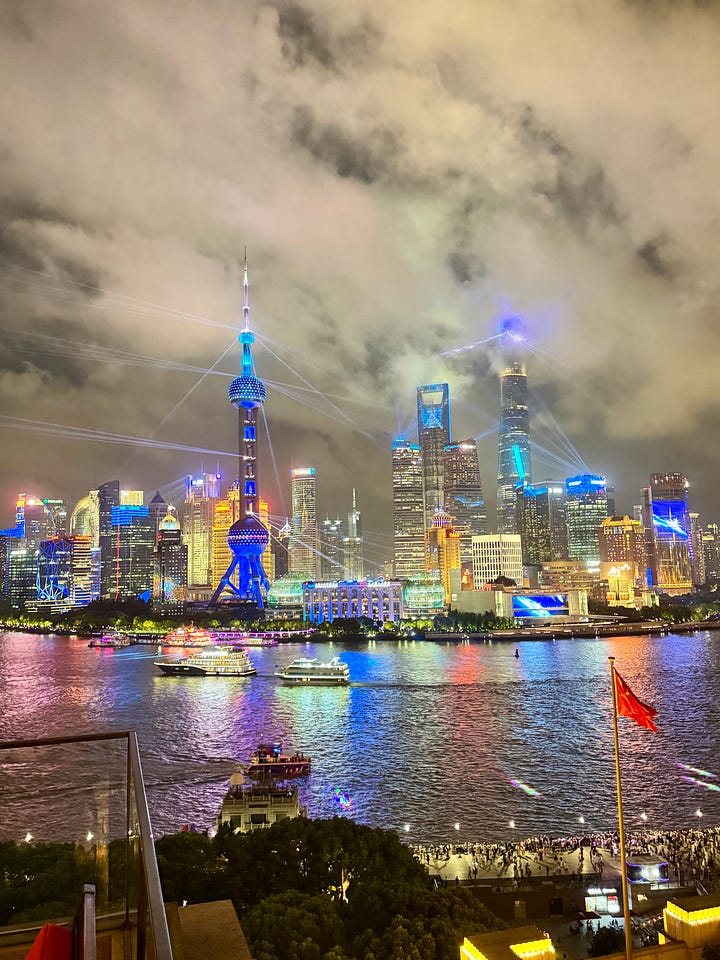

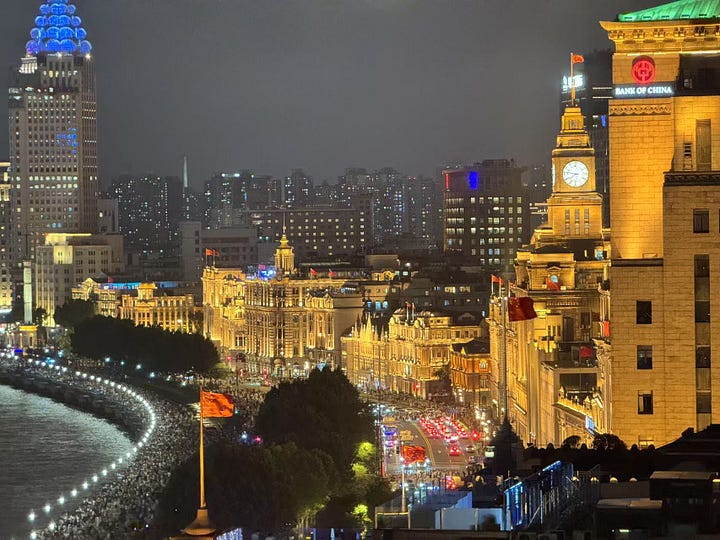
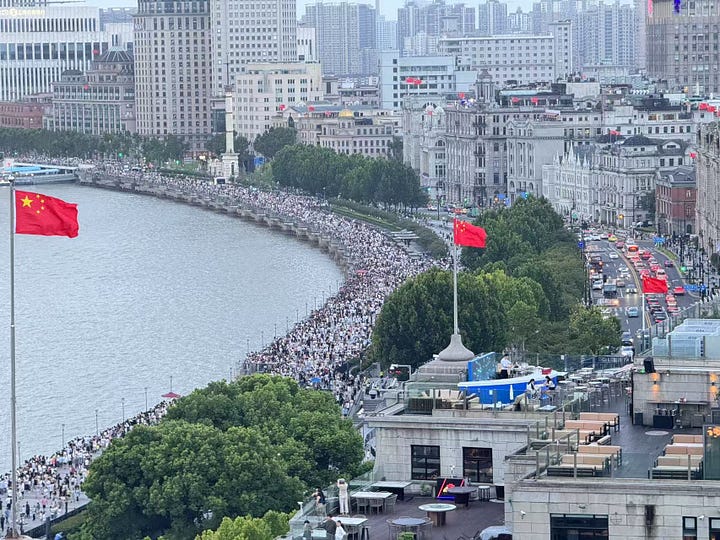
Unfortunately, I couldn't attend in person this year, but I have my eyes and ears on the ground through companies, investors, media, and those who are exhibiting and attending. The event attendance was absolutely nuts. Tickets are all sold out, and although it’s the 8th year of this event, it felt like everyone, from investors to practitioners, to the random uncle and aunties of Shanghai, all came together. I even heard of a family flying in from Singapore to immerse themselves fully in the AI evolution.
WAIC
The 2025 World Artificial Intelligence Conference (WAIC), held in Shanghai from July 26 to 28 (with the exhibition extended to July 29), unequivocally demonstrated China's strategic commitment to Artificial Intelligence, signaling that the nation is "all-in" on this transformative technology. The event, themed "Global Solidarity in the AI Era," also incorporated a High-Level Meeting on Global AI Governance, reflecting China's intent to not only develop AI domestically but also to shape its international norms and future.
The conference featured over 800 participating firms, representing a substantial increase from the 2024 event, which had more than 500 participants. The total exhibition area expanded to over 70,000 square meters, up from 50,000 in 2024, like it is HUGE.
The event drew over 20,000 attendees from approximately 40 countries, comprising policymakers, representatives from international organizations, academics, and tech leaders. Notable leading global AI experts, including Geoffrey Hinton, Eric Schmidt, and Anne Bouverot, participated.
WAIC showcased over 3,000 AI innovations, including 40 large-language models (LLMs), 50 AI devices, and 60 intelligent robots.
Essentially, all prominent Chinese firms had a booth; notable companies such as Huawei, Alibaba, Unitree, iFlytek, MiniMax, and DeepSeek were present, alongside international participants including Tesla, Alphabet (Google), and Amazon.
Key Themes at WAIC 2025
AI Governance
On the regulatory side, the high-level theme that seemed top of mind for many. China’s attempt to lead in “global south” regulations and cooperation. The overarching theme is that AI should be inclusive, jointly developed, and co-governed — especially with participation from the “Global South.”
The event is actually partially backed by the government, and thus it wasn’t a surprise to see government officials using the WAIC platform to announce government-led initiatives.
Chinese Premier Li Qiang attended the event and proposed the establishment of a global AI cooperation organization to address the fragmented nature of current global AI governance, mitigate monopolization risks, and expand the benefits of AI, particularly to the Global South. He emphasized the need for strengthened coordination to form a global AI governance framework with broad consensus. Positioning China as a proactive leader in shaping global AI norms, he proposed a comprehensive framework for international AI governance.
He even announced plans for a global AI cooperation organization during a speech at the opening ceremony on Saturday. It is reported that the initial headquarters are likely to be in Shanghai, according to Chinese state media.
The gist of the big proposal is to promote inclusivity especially amongst the “global south”, strengthen global collaboration on governance, develop a multilateral policy and ethics framework addressing AI safety risks, governance norms, and ethical use, accelerate global development of clean-power AI data centers, next-generation networks, and computing infrastructure, reducing disparities in access and if I’m not mistaken first time openly pushing for more open-source technology and sharing.
The Chinese government leader explicitly warned against AI becoming an "exclusive game for a few countries and companies," attributing this risk to chip shortages and talent restrictions.
This proposal strategically tries to position China as a significant voice in shaping global AI norms, potentially offering an alternative or complementary framework to existing or emerging U.S.-led initiatives, timely enough, just days after President Donald Trump’s AI Action Plan that also openly embraces for further open source sharing, building trust amongst allies and encouragement to deploy U.S. tech overseas. Though I dont like the “arms race” narrative, it does feel like an active positioning of calling for “choosing sides.”
Potential Bubbles Identified
Over the last few weeks, it seems that everyone has suddenly become interested in humanoid robotics, possibly because they look kinda cool or because news has been circulating that UniTree is preparing for an IPO. My current take is that humanoids are currently a bit overhyped due to the lack of 3D data for training and significant safety concerns.
Anyway, I’m not the only one. Analysts from Jefferies have identified "1.5 bubbles" within China's AI sector in their most recent WAIC wrap-up report. Indicating areas of potential over-excitement and investment relative to their current technological maturity and practical market readiness.
Humanoid Robots (One Bubble): Despite over 90 new robot models showcased at WAIC (which’s the thing, right? There are just too many right now, and they’re not differentiated enough), analysts perceive a bubble due to significant technological constraints, high costs, and limited practical applications. (which I wrote about here after visiting the Beyond Expo in Macau) More specifically, challenges include palm flexibility, sensing capabilities, and the immense computing power needed for the main brain.
Despite headlines about some humanoid robots costing only around $3,000, those are not the most advanced models. Taking an average of a few models, costs remain high for the average mass consumer, estimated at around RMB 300,000 (approximately USD 40,000) per unit for a high-functioning one, making mass consumer adoption "still far away".
And while "highly entertaining," semi-robots (e.g., on wheels) and robotic arms are considered "much more practical solutions for industrial applications".
State-owned China Telecom (CT) showcased a human-simulated and controlled humanoid robot that is more cost-competitive for industrial use (RMB 100K-150K). However, customers would still need to factor in maintenance and power costs. (It’s like buying a luxury Mercedes in Hong Kong; the car might only cost you USD 10,000, but parking and gas can add up to that annually.)
Other areas identified as a “half bubble” by Jefferies include AI/AR Glasses. As I recently wrote, they still feel a bit gimmicky, though that might change if we see Alibaba’s newly launched Kuake glasses take off. Alibaba’s strength here? They integrated the second most popular map app, Gaode Map 高德地图, into the wearable, so navigation will be a substantial competitive advantage. Many players, including Google, XREAL, Xiaomi, and Huawei, are launching or about to launch AI/AR glasses with broadly similar functionalities (Google will have a similar edge as Baba here - my take).
However, wearables are still relatively niche. The technology for AR display components, such as microdisplays and waveguides, remains expensive and challenging.
Compute and Power Demand
We’ve written extensively about China’s top-down industry policies that promote renewable energy and the more equitable distribution of data centers across the nation. Washington's AI Policy seems to have put energy at the front and center as well, committing to loosening environmental rules to boost power efficiency, and Donald Trump gave his big speech on how he got Japan and the EU to “pay for everything” and the U.S. will prioritize power supply for AI demand and how he’ll “beat” China and yadayada during the most recent All-in podcast.
It is the most “hard power” element of the AI development, aside from chips, really. So China’s SOE, China Telecom, vowed to play a more pivotal role in optimizing resource utilization during WAIC as well.
East Data West Compute is not a new concept. This initiative, which has been underway since 2021, involves transferring surplus computing power from third-party data centers in western regions to customers in the east who require it. These Western Internet Data Centers (IDCs) utilize a mix of both NVIDIA and local chips and are built by a combination of local government and private enterprises.
But what is China Telecom's role? China Telecom (CT) is at the forefront of this effort, building the necessary networks and custom-designing software stacks to facilitate this transfer. Notably, CT has developed its own hardware (such as switches and routers) and software stacks to support the ecosystems of different AI chips, enabling them to become CUDA-compatible.
CT also operates two large AI chip clusters, each with over 10,000 chips, which support its cloud computing power. In June 2025, the government issued a policy paper calling for the establishment of a platform for trading computing power. Analysts believe China Telecom is "ahead of the curve" in building the necessary network and platform and is likely to become the official operator of this platform. This would help CT generate additional revenue, foster China's AI growth given computing power constraints, and improve the utilization of IDCs in the West.
For investors, CT's involvement highlights a significant long-term commitment by the government and potentially a revenue opportunity as the critical infrastructure provider for China's AI growth. This initiative is a pragmatic response to the dual challenges of geographic imbalances in computing infrastructure and ongoing chip supply limitations, aiming to improve overall utilization of existing and diverse hardware resources.
Some Other Sprinkles of Intersting Happenings
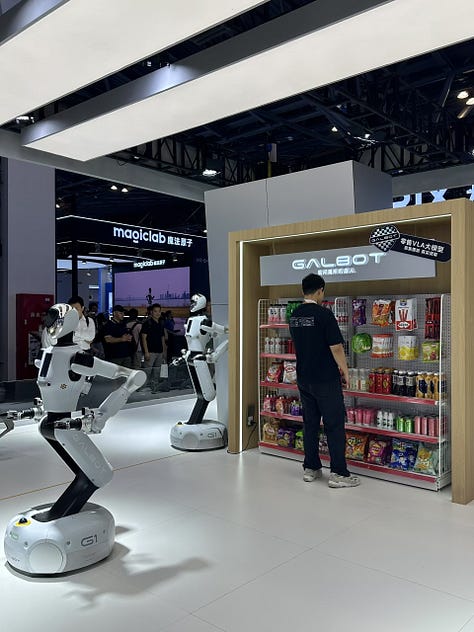
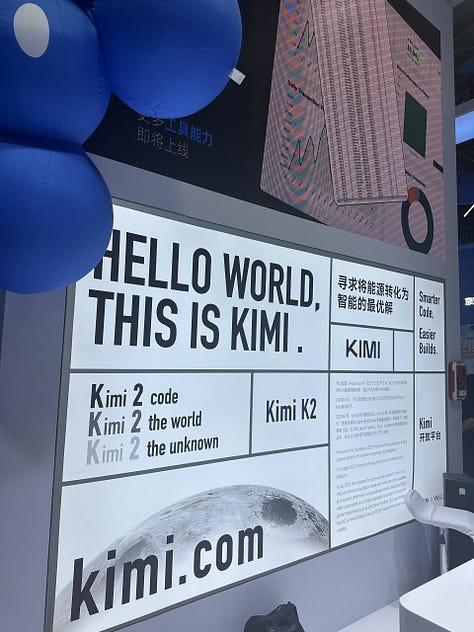
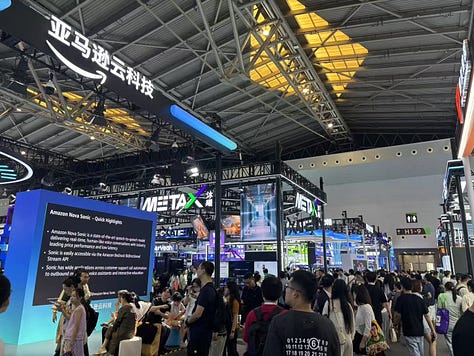
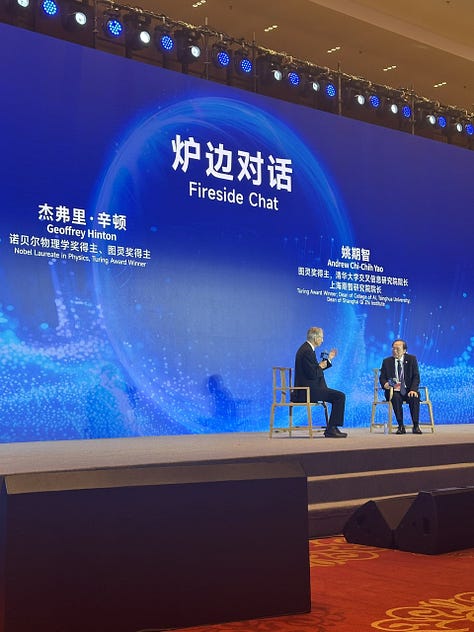
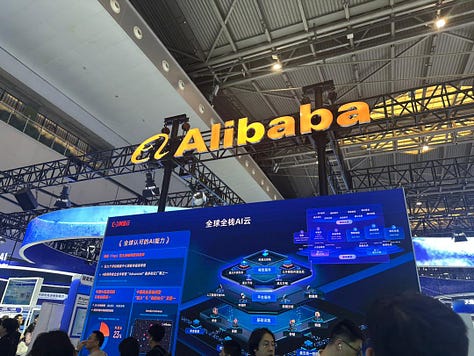
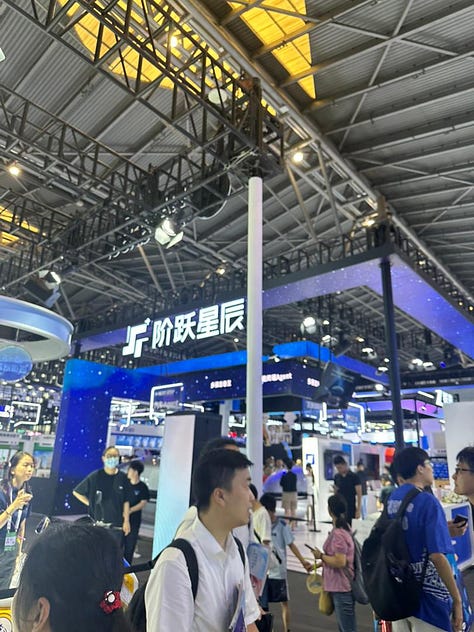
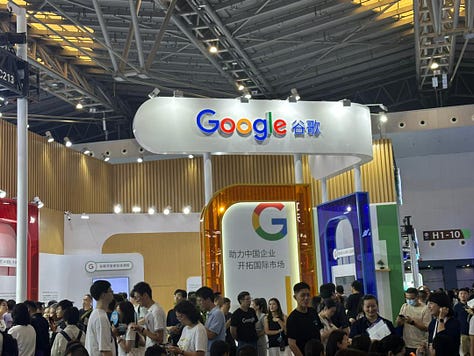
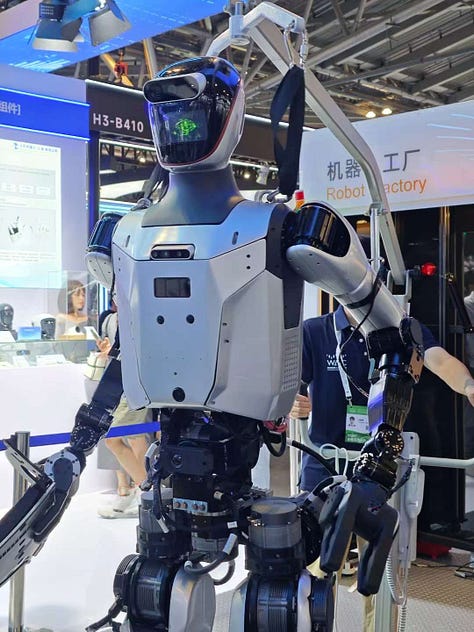
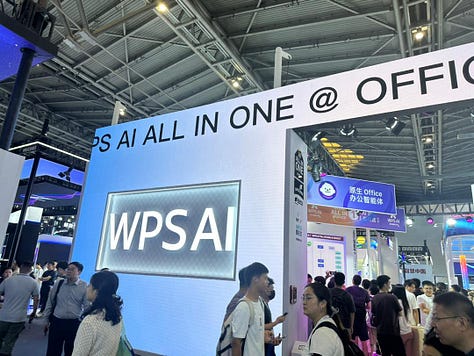
There is just so much to uncover from WAIC 2025, which I’ll try to do justice to over the next few days. The exhibitors showcased a diverse range of AI innovations, some of which include:
Huawei debuted its CloudMatrix 384 AI computing system, which integrates 384 of its 910C chips and leverages a supernode architecture, positioning it to compete with Nvidia’s top-tier GB200 NVL72 system.
LLM startup MiniMax displayed its full lineup of AI-native products, including MiniMax Agent, Hailuo AI, MiniMax Audio, and the Xingye AI app.
Local startup iFlytek (btw I think they’re low-key super interesting and I’ll do a story on them later down the line) unveiled an upgraded SparkDesk X1 LLM, featuring enhanced math-solving, translation, multilingual dialogue, and coding capabilities.
Tesla showcased its Tesla Bot.
Cisco introduced its CX Generative Intelligent Operations platform.
Schneider’s Siemens Industrial Copilot was on display.
Humanoid robotics companies, such as Unitree and Agibot, presented prototype robots for industrial, retail, and entertainment applications.
Parting Words, For Now
WAIC 2025 demonstrated China's ambitious drive to become a global leader in AI, encompassing both cutting-edge technological development and strategic diplomacy in AI governance. The two words used most frequently across panels and discussions were “application” and “ecosystem,” echoing what we’ve been writing about here on AI Proem, which is “deployment” and “distribution,” essentially.
While China's "all-in AI" strategy is evident, Jefferies' analysis offers a cautionary perspective on potential "bubbles" in areas like humanoid robots and AI/AR glasses, citing significant technological hurdles and high costs. Nevertheless, the progress in computing power infrastructure, particularly China Telecom's initiatives, is deemed crucial for China's continued growth in AI. The conference highlighted the intricate interplay between innovation, policy, and international relations in the evolving global AI landscape.
One thing I’m kinda getting the ick from mainstream media is this narrative of “China’s AI will win or China’s AI will lose.” Ultimately, AI as we know it now is a software enhancement for now (Jensen Huang said), so each company across the stack will have its edge in integrating AI. You can say that in China, the leading LLMs are DeepSeek, Kimi K2, and the Qwen series. However, as for how AI is being deployed, companies have different platforms and vessels that can carry them out, and each can then leverage their existing moats. Such as the BBATs through their existing consumer-facing software. Or even the DJIs and EVs, through their hardware products, and SenseTime that can leverage its facial recognition and computer vision technology for healthcare image screening, and that list goes on.
Whether it's business practitioners or technical researchers, everyone keeps saying one thing- “We Are At The Infancy Stage of AI,” and by the chaotic scenes and demos at WAIC, you can sense that vibrant energy but also immaturity of the space. There just shouldn't be a definitive conclusion on who is “winning” yet.
Lastly, most coverage of WAIC, to be honest, is very consumer-facing, as in product reviews and product launch materials. I’ll sift through some top tech platforms tomorrow and share some highlights in the coming days.





